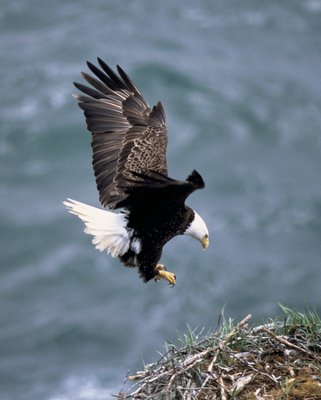Comments sought about delisting Bald Eagles
 The U.S. Fish & Wildlife Service reopened the public comment period on its 1999 proposal to remove Bald Eagles from the federal list of threatened and endangered species. Comments must be received by May 17.
The U.S. Fish & Wildlife Service reopened the public comment period on its 1999 proposal to remove Bald Eagles from the federal list of threatened and endangered species. Comments must be received by May 17.The national symbol received federal protection in 1940. Unfortunately, the number of nesting pairs declined to only 417 in the lower 48 states by 1963. The last national census of the species in 2000 revealed approximately 6,470 nesting pairs. Today, estimates put the number at more than 7,060 pairs.
That increase resulted from individual, corporate, academic, nonprofit, tribal and government efforts on the local, state and national levels. The recovery process included captive-breeding programs, reintroduction, law enforcement efforts, habitat purchase and preservation, and nest-site protection.
“The recovery of the Bald Eagle, our national symbol, is also a great national success story,” said H. Dale Hall, director of the U.S. Fish & Wildlife Service. “The actions we take today reemphasize the management efforts that have proven so successful in recovering eagle populations. Should the eagle be delisted, we expect that the public will notice little change in how eagles are managed and protected.”
You can read more details about the eagle's history in this previous post.
The re-opening of the public comments period, the roughdraft of the National Bald Eagle Management Guidelines and the possible definition of the term "disturb" (which wasn't codified in previous documents) will appear in the Federal Register.
Comments about the proposed delisting can be sent to baldeagledelisting AT fws.gov or to
Michelle Morgan, Chief, Branch of Recovery and Delisting
Endangered Species Program, U.S. Fish & Wildlife Service
4401 N. Fairfax Drive, Room 420
Arlington VA 22203
Photo courtesy of U.S. F&WS


0 Comments:
Post a Comment
<< Home